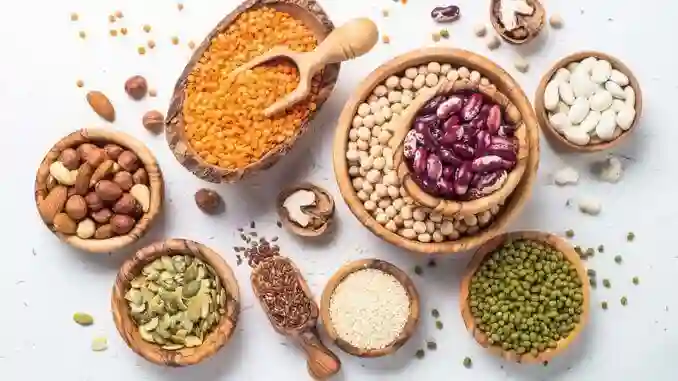What is a Cell?
Cells are the fundamental unit of life. It is the basic functional and structural constituent of all living organisms. Cells are made up of a cytoplasm enclosed within a membrane with a number of proteins and nucleic acids. Many cellular structures called organelles are also suspended in the cytoplasm. A cell can replicate itself and give rise to daughter cells.
History
Cells emerged on Earth approximately 4 billion years ago. However, it was Robert Hooke who discovered and studied cells in the 17th century. In 1665, he described cells in his book, called Micrographia, as thin slices of a bottle cork. The word cell was taken from the Latin word ‘cella’, which means a small room where monks lived in olden times.
The Cell Theory
In the mid-nineteenth century, two German scientists, Theodor Schwann and Matthias Jakob Schleiden, proposed the cell theory, which stated that all living beings are made up of cells. They postulated the following three points –
- All living organisms are made up of one or more than one cell.
- Cells are the basic functional and structural unit of all living beings.
- All the cells arise from pre-existing cells.
Types of Cells
Cells can be of two types – prokaryotic and eukaryotic.
- Prokaryotic cells: Prokaryotic cells are the most primitive life form on Earth. It is simple and does not contain a well-defined nucleus or any other cellular organelles. The genetic material, DNA, is in the form of a single circular chromosome that lies in direct contact with the cytoplasm. Prokaryotes are the smallest organisms ranging in size from 0.5 to 2.0 μm in diameter. Bacteria and archaea are prokaryotic cells.
- Eukaryotic cells: Eukaryotic cells are complex structures that can be differentiated from the prokaryotic cells by the presence of cellular organelles. Plants, animals, protozoa and fungi are eukaryotic cells. A eukaryotic cell comprises a true nucleus that houses the cell’s genetic material along with all the organelles.
Components of a Cell
- Cell membrane: The cell membrane, also known as the plasma membrane, is a selectively permeable membrane that protects the cell from the outer environment and allows selective entry of particles into the cell. The eukaryotes have the plasma membrane as their outermost cell layer, but prokaryotes and plant cells have a cell wall exterior to the cell membrane.
- Cytoskeleton: Cytoskeleton is a dense, complex network of actin filaments that are found in the cytoplasm of eukaryotic cells. It extends up to the cell membrane from the cell nucleus. Cytoskeleton gives mechanical and structural shape to the cell and is also involved in cell signalling pathways.
- Genetic material: The genetic material differs widely in prokaryotic and eukaryotic cells. Prokaryotic cells have single circular chromosomes, while eukaryotic cells have double-stranded DNA helix, which is further packed with histone molecules to form chromosomes.
Organelles
- Cell nucleus: A cell nucleus is the most conspicuous organelle of eukaryotic cells. It is home to chromosomes, where all the DNA replication and transcription takes place. It is differentiated from the cytoplasm by a double membranous nuclear envelope.
- Mitochondria: Mitochondria are the powerhouses of a cell. It is the site for respiration, where energy is released by the process of oxidative phosphorylation. Mitochondria are found in eukaryotic cells.
- Plastid/chloroplast: Plastids are membrane-bound organelles that are found in prokaryotic and plant cells. It is not found in animal cells. Chloroplasts are found in plant cells that contain the chlorophyll pigment and carry out photosynthesis.
- Endoplasmic reticulum: The endoplasmic reticulum (ER) is a transport organelle that is used to tag proteins and facilitate its transport to other sites in the cell. There are two forms of ER – rough endoplasmic reticulum (RER) and smooth endoplasmic reticulum (SER).
- Golgi apparatus: The Golgi apparatus is a eukaryotic organelle that functions to pack the lipids and proteins produced in cells for transportation.
- Lysosomes: Lysosomes contain digestive enzymes that help in engulfing extracellular organelles, waste products and bacterial and viral bodies.
- Centrosome: Centrosome, also known as the cytoskeleton organiser, is an organelle that produces microtubules which is a key component of the cytoskeleton. It also helps in the transport of proteins and lipids via ER and Golgi apparatus.
- Vacuoles: Vacuoles are liquid-filled spaces that are surrounded by a membrane. In plant cells, it is used to store water. In animal cells, it helps in removing waste products.
- Ribosomes: Ribosomes are found in both prokaryotic and eukaryotic cells. It helps in the translation of proteins.
Plant Cells vs Animal Cells
Both plant and animal cells are of eukaryotic nature. Plants occupy the position of producers in the ecosystem and animals occupy the position of consumers. Because both have different roles, their cells too differ in appearance, structure and functions. While plant cells have plastids, animal cells are devoid of those because they do not need to make their own food. The plants have a cell wall outside their plasma membrane while the animal cells do not. In this way both plant and animal cells differ from one another.
Visit BYJU’S for more interesting topics in Biology.
click here for more articles.












